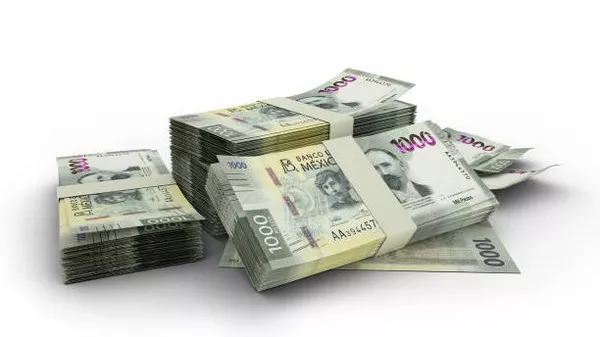The Mexican peso (MXN) stands as the official currency of Mexico, symbolized by the “$” sign. As one of the most traded currencies in Latin America, the peso plays a crucial role in facilitating domestic and international transactions, investment activities, and economic development. However, questions often arise regarding the longevity and validity of Mexican pesos, leading to inquiries about whether they expire. In this comprehensive article, we’ll delve into the intricacies of Mexican peso policies, addressing common misconceptions and providing clarity on whether Mexican pesos expire.
Introduction to the Mexican Peso
The Mexican peso traces its origins back to the Spanish colonial era when Mexico was part of the Viceroyalty of New Spain. Over the centuries, the peso has evolved, experiencing various denominations, reforms, and economic fluctuations. Today, the Mexican peso is issued and regulated by the Bank of Mexico (Banco de México), the country’s central bank.
Misconceptions about Currency Expiry
Before delving into the specifics of Mexican peso policies, it’s essential to dispel common misconceptions about currency expiry. Many individuals mistakenly believe that currencies, including banknotes and coins, have an expiration date beyond which they become obsolete or lose their value. However, this notion is largely unfounded.
In reality, most currencies, including the Mexican peso, do not have an expiry date. As legal tender issued by a central bank or government authority, currency remains valid indefinitely, allowing individuals to use it for transactions regardless of the issuance date. However, certain factors, such as currency demonetization or replacement, may impact the circulation and acceptance of older banknotes and coins.
Mexican Peso Policies: Validity and Acceptance
The Bank of Mexico oversees the issuance, distribution, and regulation of Mexican pesos, ensuring the integrity and stability of the currency. Here’s what you need to know about the validity and acceptance of Mexican pesos:
Legal Tender Status: Mexican pesos, including banknotes and coins, hold legal tender status throughout Mexico. As such, individuals and businesses must accept pesos as payment for goods and services, regardless of the denomination or issuance date.
Banknote Security Features: The Bank of Mexico regularly updates and enhances the security features of Mexican peso banknotes to prevent counterfeiting and ensure authenticity. Individuals should familiarize themselves with these security features to identify genuine banknotes and avoid counterfeit currency.
Coin Circulation: Mexican peso coins, denominated in pesos and centavos, circulate alongside banknotes and are widely accepted for transactions of varying amounts. While certain coins may feature commemorative designs or limited mintages, they retain their face value and purchasing power.
Exchange and Conversion: Individuals holding older or discontinued banknotes and coins can typically exchange them for current denominations at authorized financial institutions, such as banks or currency exchange bureaus. However, some restrictions may apply, particularly for extremely old or rare currency specimens.
Demonetization and Replacement: Periodically, the Bank of Mexico may announce the demonetization or replacement of specific banknote series or coin designs. In such cases, individuals are typically given a grace period to exchange or deposit outdated currency at designated locations before it loses its legal tender status.
Currency Conservation and Preservation
While Mexican pesos do not expire in the traditional sense, preserving the integrity and quality of banknotes and coins is essential for maintaining their value and usability. Here are some tips for currency conservation and preservation:
Handle with Care: Avoid excessive folding, creasing, or tearing of banknotes, as this can compromise their structural integrity and diminish their visual appeal. Store banknotes in flat, protective sleeves or albums to prevent damage.
Protect from Environmental Factors: Shield banknotes and coins from exposure to moisture, sunlight, heat, and other environmental elements that may cause discoloration, fading, or deterioration over time. Use climate-controlled storage solutions for long-term preservation.
Avoid Contamination: Handle banknotes and coins with clean hands to prevent the transfer of oils, dirt, or other contaminants that can stain or degrade the currency. Refrain from writing, marking, or applying adhesive materials to banknotes.
Regular Inspection: Periodically inspect your currency collection for signs of wear, damage, or deterioration. Promptly address any issues to prevent further degradation and maintain the value of your holdings.
Consult Experts: If you have rare or valuable currency specimens in your collection, consider seeking guidance from numismatic experts or professional currency appraisers to assess their condition, authenticity, and market value.
Conclusion
In conclusion, Mexican pesos do not expire in the traditional sense, as they hold legal tender status indefinitely. However, individuals should remain vigilant regarding currency policies, updates, and announcements from the Bank of Mexico to ensure compliance and avoid potential issues with outdated currency. By understanding currency validity, acceptance, and preservation practices, individuals can confidently utilize and preserve their Mexican peso holdings for both practical and collectible purposes.


